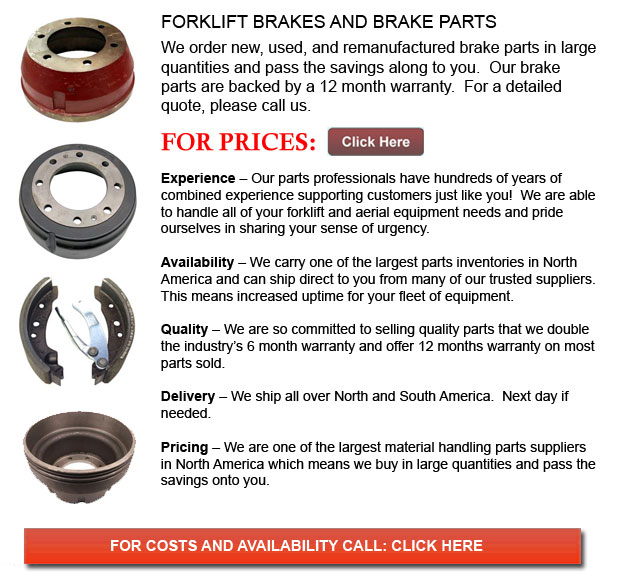
Brake for Forklift - A brake drum is wherein the friction is supplied by the brake pads or brake shoes. The shoes or pads press up against the rotating brake drum. There are several other brake drums kinds with certain specific differences. A "break drum" will normally refer to when either pads or shoes press onto the interior exterior of the drum. A "clasp brake" is the term utilized so as to describe if shoes press next to the outside of the drum. One more kind of brake, known as a "band brake" makes use of a flexible band or belt to wrap around the outside of the drum. If the drum is pinched in between two shoes, it could be referred to as a "pinch brake drum." Like a conventional disc brake, these kinds of brakes are somewhat uncommon.
Early brake drums, before 1955, needed to be constantly modified in order to compensate for wear of the drum and shoe. "Low pedal" can result if the needed modifications are not carried out sufficiently. The motor vehicle can become hazardous and the brakes can become useless when low pedal is combined with brake fade.
There are quite a few various Self-Adjusting systems utilized for braking obtainable these days. They can be classed into two separate categories, the RAI and RAD. RAI systems are built in systems which help the tool recover from overheating. The most popular RAI manufacturers are Bosch, AP, Bendix and Lucas. The most well-known RAD systems include Ford recovery systems, Volkswagen, VAG, AP and Bendix.
Self adjusting brakes usually use a device which engages only if the motor vehicle is being stopped from reverse motion. This stopping technique is satisfactory for use where all wheels make use of brake drums. Most vehicles these days make use of disc brakes on the front wheels. By working only in reverse it is less likely that the brakes will be applied while hot and the brake drums are expanded. If adjusted while hot, "dragging brakes" can occur, which increases fuel expenditure and accelerates wear. A ratchet mechanism that becomes engaged as the hand brake is set is one more way the self adjusting brakes may work. This means is just appropriate in functions where rear brake drums are used. If the emergency or parking brake actuator lever goes over a specific amount of travel, the ratchet improvements an adjuster screw and the brake shoes move toward the drum.
Situated at the bottom of the drum sits the manual adjustment knob. It can be adjusted using the hole on the opposite side of the wheel. You would have to go underneath the vehicle along with a flathead screwdriver. It is extremely vital to adjust every wheel equally and to be able to move the click wheel properly because an unequal adjustment can pull the vehicle one side during heavy braking. The most effective method so as to ensure this tedious task is done safely is to either lift each wheel off the ground and hand spin it while measuring how much force it takes and feeling if the shoes are dragging, or give each one the same amount of clicks using the hand and then do a road test.
![]() Click to Download the pdf
Click to Download the pdf
Forklift Parts
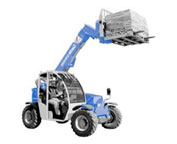
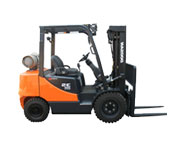
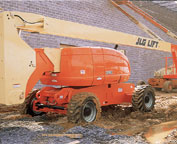
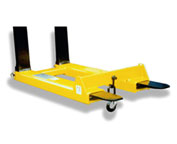
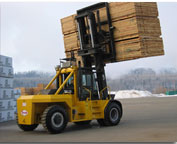
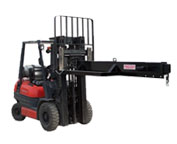
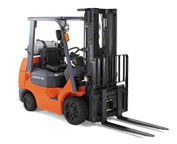
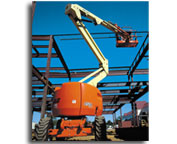
Lift Parts Express
TOLL FREE: 1-888-695-7994
LOCAL: (408) 329-1477
2784 Homestead Rd 125
Santa Clara, California
forkliftpartssantaclara.com
Email Us
About Us


